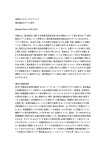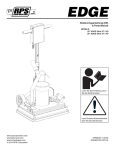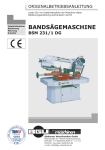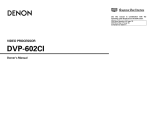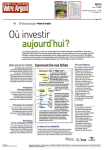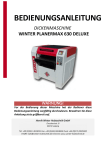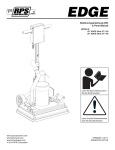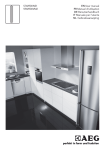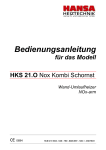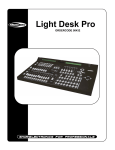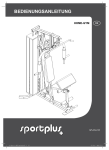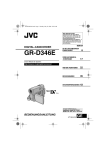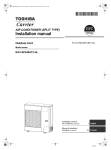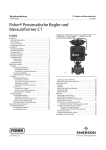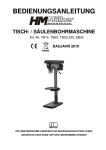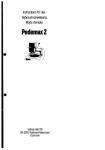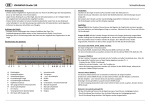Download 4~rue~ - Struers
Transcript
Planopol-3 Instruction Manual Gebrauchsanweisung Mode d’emploi 4 ~rue~ Serial No.: Voltage: *1991.09 Instruction Manual Planopol-3 In technical enquiries and in orders for spare parts, please state apparatus No. and voltage (see cover). All information and data in this Instruction Manual were valid when it was printed. The Struers policy being, however, to make current improvements of our products, we reserve ourselves the right to modif~iour products without notice. Besides, we ask you to note that this Instruction Manual concerns apparatus and all accessories. Consequently, it may happen that the Manual mentions equipment which is not of relevance for your purpose at the present time. 1. Description 2. Technical data 3. Accessories 4. Contents of packing case 5. Installation 5.1 5.2 5.3 5.4 Setting up Connection to mains Connection to water Mounting of Conversion Kit 6. Operation 7. Maintenance 8. Trouble-shooting 9. Spare parts (Appendix) 10. Illustrations (Appendix) Struers A/S Valhejs Allé 176 DK.2610 Rodovre/Copenhagen Denmark ~ Telephone +45 31 70 80 90 ~Fax +45 31 41 65 44 Telex 19625 if Struers Instruction Manual Planopol-3 1. Description Planopol-3 is a standard machine for lapping, wet grinding and diamond and alumina polishing of metallographic, ceramic and mineralogical specimens. It has a circular turntable accepting grinding, lapping and/or polishing discs of diameters up to 300 mm. Supported by precision ball bearings, the turntable is driven via a V-belt drive by a powerful two-speed electric motor, which ensures smooth and noiseless running. Motor and turntable are mounted on a steady steel frame also supporting the cabinet. The latter is provided with a needle valve for adjusting water admission, a flexible sprinicler tube and a spill pan with drain. On the control panel are arranged, to the right, three push buttons with light indication for setting the speed (higb!low) and for stop. The mains switch is easily accessible to the right on the front ofthe cabinet. if Struers 3 Instruction Manual Planopol-3 2. Voltage/frequency Technical data 1-phase machines 115 V, 60 Hz 220 V, 50 Hz 3-phase machines 3 x 220 V, 50 Hz 3 x 380 V, 50 Hz 3x415V, 50Hz 3 x 440 V, 50 Hz 3 x 500 V, 50 Hz 3 x 220 V, 50 Hz 3 x 440 V, 60 Hz 3 x480 V, 60Hz Motor output 1-phase 50 Hz 370, 220 W 60 Hz 450, 300 W 3-phase 50 Hz 550, 300 W 60 Hz 650, 370 W Rotational speed Standard 150, 300 rpm Conversion Kit 75, 150 rpm or 300, 600 rpm or 600, 1200 rpm Polishing/grinding disc Max. 300 mm Dirnensions Height: Width: Depth: Weight 53kg Safety standard IEC 204/ (VDE 0113) EN 60204-1 4 if Struers 340 mm 462 mm 743 mm Instruction Manual Planopol-3 3. Accessories A complete range of different discs ofdiameters between 200 and 300 mm is available, including discs for grinding with grinding paper, lapping on cast iron with a variety of surfaces, fine lapping on plastics or special lapping discs, as well as polishing discs of PVC and aluminum. In addition, a complete program ofconsumables are available, such as polishing cloths, diamond paste or spray, SIC paper or powder, alumina, etc. Please refer to separate leaflets. Planopol-3 has been prepared for mounting ofPd.M-Force (fig. 2), a motor-driven sample mover for simultaneous lapping and/or polishing of1-9 specimens. For automatic preparation offrom 3 to 12 specimens simultaneously also Pedemax-2 (fig. 3) may be mounted on Planopol-3 (3-phase model), thus making it possible to grind, lap and polish a number of specimens at a time. Both PdM-Force and Pedemax-2 reduce the preparation time and provide reproducible results. For details you are referredto separate leaflets. Conversion Kit Planopol-3 is supplied as standard with 150/300 rpm. By mounting of a Conversion Kit (codeword: PLATT) the following rotational speeds may be obtained: 75/150, 300/600, and 600/1200 rpm. if Struers 5 Instruction Manual Planopol-3 Conversion Kit 6 4. Contents of packing case 1 1 1 1 2 1 1 1 1 1 1 Planopol-3 Protection ring Drain elbow pipe Drain hose Hose clips 20-32 mm Hose connector Union nut for hose connector Sealing ring for hose connector Hose clip 13 mm Hexagon spanner 6 mm for turntable Fuse0.5AT220V 1 1 1 1 1 1 1 1 1 3 V-belt pulley with two grooves (fig. 5.3) Fitted bolt (fig. 5.2) Washer (fig. 5.4) Adjusting plate (fig. 5.1) V-beltZ 17 (10x425 mm) (60 Hz) V-belt Z 18 (10 x 450 mm) (50 Hz) V-belt HY-T SPZ (10 x 1312 mm) (60 Hz) Hexagon spanner (8 mm) for fitted bolt Hexagon spanner (2.5 mm) for V-belt pulleys Plastic plates stating the speeds 75, 600 and 1200 rpm if Struers Instruction Manual Planopol-3 5. Installation 5.1 Setting up Planopol-3 is detached from the bottom ofthe packing case by removing the four screws from below, after which Planopol-3 can be placed on the bench. 5.2 Connection to mains Before the apparatus is connected it must be checked that the voltage which is indicated on the label ofthe machine, is in accordance with the local voltage. Mount a plug on the electric cable, connecting the leads as follows: 1-phase machine Yellow/green lead to earth Brown lead to phase Blue lead to neutral 3-phase machine Yellow/green lead to earth Brown lead to phase Black lead to phase Black lead to phase The turntable should rotate anti-clock wise. If this is not the case after the connection, change the direction by changing over two of the phase leads. 5.3 Connection to water Connect the thin reinforced hose to a water outlet and fit the 13 mm hose clip. The accompanying hose connector with union nut and sealing ring may, where not already provided, be mounted on the water outlet (1/2” pipe thread, BS 2779: G 1/2). If a recirculating cooling unit is used, connect the hose to the discharge branch of the pump and fit a hose clip. Lead the thick hose to the drain and be very careful to place it with a steady downward slope to prevent the water from being discharged too slowly which may cause overflow or blocking of the water outlet. In order to avoid elbows on the hose, the enclosed elbow pipe can be mounted on the tubing in an appropriate place. if Struers 7 Instruction Manual Planopol-3 5.4 Mounting of Conversion Kit The rotary speed is changed by changing the transmission ratio of motor and turntable. The V-belt pulley ofthe motor is provided with two grooves of different diameters. In the standard version of 150/300 rpm the drive is effected directly from the small diameter groove to the V-belt pulley ofthe turntable. If the motor V-belt pulley is inverted so that the drive is established from the large diameter groove, the speed ofthe turntable is doubled. Like the motor V-belt pulley, the extra V-belt pulley has two grooves of different diameters. By inserting this extra pulley as an inter mediate wheel a speed either twice or half the one mentioned above may be obtained, depending on which way the intermediate wheel and the motor V-belt pulley are fitted. The various combinations possible will appear from fig. 4, which also shows which V-belts to use. Always make sure that the V-belt pulleys are mounted in such a way that the belt pulls between two grooves running in the same plane. Change of rotational speed is done as follows (after disconnection of power plug): Take out the 6 screws securing the rear section ofthe cabinet and lift this section off. Remove the nuts securing the motor bridge, after which the V-belt pulley may be mounted according to fig. 5. Fit the V-belt pulley as shown in fig. 4, which indicates the correct positioning ofthe motor V-belt pulley. The motor V-belt pulley is fastened by means oftwo pointed screws in the bottom of the V-belt grooves. When these screws are slackened, the V-belt pulley can be pulled off~ For exchange of the long V-belt the turntable must be taken out. This is done after removal ofthree screws at the top ofthe turntable. Position the belts as shown in fig. 4. First tighten the short V-belt by means ofthe adjusting plate (fig. 5.1), then clamp the latter. Remount the motor bridge and tighten the long belt by pushing the motor rearward and clamp it into position. It is important to ensure adequate belt tension since undertensioning will cause the belt to slip on the pulleys, impairing the drive transmitted to the turntable, whereas overtensioning produces noise. The long belt is correctly tensioned when a force of 5 N applied halfway between the pulleys causes a bend of about 6 mm. When applied to the short belt, the same force should produce a bend of 2-3 mm. The push button plates indicating the new speeds are exchange by first un screwing the metal ring round the buttons and then pressing offthe green plastic plate. Fit the new indications and assemble the buttons in reverse order. Finally, remount the rear section ofthe cabinet. 8 if Struers Instruction Manual Planopol-3 6. Operation Planopol-3 is started by first operating the mains switch (fig. 1.1). This actuates the red lamp in the uppermost ofthe three push buttons at the right side (fig. 1.2). The button in the middle of the three (fig. 1.3) starts the motor at low speed, whereas the lowest button (fig. 1.4) switches to the higher speed. Activation ofthese buttons causes the lamp built into each button to glow. The machine is stopped by pressing the uppermost, red push button (fig. 1.2). The push buttons may be activated in any order. When stopped by the mains switch or by a power failure, the motor does not start on reconnection of power, but has to be started by operation of the push buttons. This prevents unintentional motor start during exchange of grinding/polishing disc. In the case of prolonged overloading ofthe motor a built-in thermal relay cuts out the motor, re-start being possible only after a period ofcooling. The grinding, lapping or polishing disc is mounted on the turntable by inserting the three pins ofthe disc in the corresponding holes in the turntable. Make sure that the contact surfaces are clean. The water flow is controlled by a needle valve (fig. 1.5), and the distribution of water is controlled by means of the flexible sprinkler tube (fig. 1.6). Below are stated the appropriate speeds for the various preparation processes: 75 rpm Lapping on cast iron discs and PAD-K pellon cloth. Diamond polishing on Petrodisc and PA-W, PAN-W pellon cloth. 150 rpm Diamond polishing (grinding/lapping on Petrodisc-M). 300 rpm 600 rpm Wet grinding on grinding paper/wheel. Grinding on Petrodisc-M or DP-Net. Alumina polishing (automatic preparation). 1200 rpm Alumina polishing (manual preparation). The grinding paper may be af~.xedto a plane polishing disc by means of Spray Adhesive, or it may be placed on a special disc according to the Knuth-Rotor principle. By the latter method the disc is filled with water while at rest, after which paper and retaining ring are put on. Then the disc is made to rotate 300 rpm while the entire surface of the grinding paper is pressed gently against the disc with a specimen, or the like. if Struers 9 Instruction Manual Planopol-3 7. Maintenance Planopol-3 is designed and constructed for many years oftrouble free running. It will not need much attention, as its bearings are sealed and require no further lubrication. So maintenance will generally be limited to cleaning the exterior ofthe machine, the spill pan and the drain hose. Where the machine is used, for instance, for alumina polishing or SiC lapping, the spill pan should be cleaned sufficiently often to prevent drying out ofthe suspension and thus any risk of blocking ofthe hose. In order to avoid erratic disc movements, the contact surfaces between disc and turntable should be kept clean. Now and again the V-belt may need tightening, the transmission being less efficient with inadequate belt tension. To tighten the belt, remove the rear part ofthe cabinet, slacken the nuts securing the motor plate and push plate and motor towards the rear until the belt tension is correct. The belt is tightened correctly when a force of 5 N, applied to the belt in the middle between the pulleys, causes a bend of6 mm. Exchange ofthe belt is effected by additionally removing the turntable and loosening the nuts securing the motor plate so as to slacken the belt, after which the belt can be taken off the turntable pulley from above. Mounting ofthe new belt is done in reverse order. 10 if Struers Instruction Manual Planopol-3 8. Trouble-shooting Indication Explanation/cause Action Motor does not run. Red light in stop button. Motor overload. Thermal relay has cut out power. Wait 5 minutes. Motor does not run. internal transformer fuse blown. ~ Disconnect power supply. Remove rear cabinet section and replace transformer fuse. Motor does not run, but buzzes. One phase lacking (3-phase machine). Check all fuses of local wiring. Motor will only run at one speed. Call service man. If other problems arise, or ifthe above failure No light in push button, otherwise normal machine function. Bulb burnt out. Disconnect power supply. Exchange bulb by unscrewing ring round push button. Insert new bulb and turn left. Poor drive. Slipping V-belt(s). Tighten, see section 7. Water not drained. Hose pressed flat. Dirt trapped in hose. Presence of air stops discharge. Adjust hose position. Clean hose. Discharge hose should have a steady downward slope. Machine produces noise. Grinding/polishing disc vibrates. Bearings of motor or turntable defective, Clean contact surfaces between disc and turntable. Exchange bearings/motor. . corrections do not help, please call for a service technician. if Struers 11 Gebrauchsanweisung Planopol-3 Bei technische Fragen und Bestellung von Ersatztei]en bitte App. Nr. und Spannung angeben (siehe Vorderseite). Alle AuskUnfte und Daten dieser Gebraucbsanweisung waren bei der Drucklegung geltend. Struers ist jedoch bestrebt, laufend Verbesserungen des Produkts vorzunehnien. Wir behalten uns deshaib em Recht Zn fristlosen Anderungen vor. Aul3erdem machen wir Sie darauf aufmerksam, daB diese Gebrauchsanweisung von GerMen und dazu gehOrigem Zubehor handelt. Es ist deshaib moglich, daB ZubehOr erwahnt ist, das Zn demjetzigen Zeitpunkt fur Sie nicht aktuell 1st. 1. Beschreibung 2. Technische Daten 3. Zubehör 4. Inhaft der Verpackung 5. Installation 5.1 5.2 5.3 5.4 Aufstellung Eiektrischer Anschlufl Wasseranschluli Montieren des Getriebeumbausatzes 6. Bedienung 7. Wartung 8. Fehlerfindung 9. Ersatzteile (Anhang) 10. Abbildungen (Anhang) Struers A!S Valhejs AVe 176 DK-2610 Rødovre/Gopenhagen Denmark e Telephone +45 31 70 80 90 ~ Fax +45 31 41 6544 Telex 19625 if Struers Gebrauchsanweisung Planopol-3 1. Beschreibung Planopol-3 ist em Standardgerat zum Lappen, NaBschleifen und Tonerde- mid Diamantpolieren von metallographischen, mineralogischen mid keramischen Proben. Es hat einen Drehteller, auf welchem die Schleif-, Lapp- und/oder Polierscheiben mit Durchmessern bis zu 300 mm angebracht werden. Der Drehteller liegt auf Prazisionskugellagern mid wird durch einen Keilriemen von einem starken Zweigeschwindigkeitsmotor angetrieben, was einen gleichmai3igen mid gerauschlosen Lauf gewahrleistet. Der Motor mid der Drehtisch sind auf einem stabilen Stahlrahmen, auf dem auch das Gehäuse befestigt 1st, montiert. Das Gehäuse ist mit Nadelventil zu Regulierung von Wasserzufuhr, flexiblem Spritzrohr, Ablaufschale mid AbfluB versehen. Auf dem Bedienungspanel sind auf der rechten Seite drei Druckknopfe mit Lichtanzeige zur Wall von niedriger, hoher Geschwindigkeit mid Stopp angebracht. Der Haupschalter sitzt bequem rechts an der Frontseite des Gehäuses. if Struers 3 Gebrauchsanweisung Planopol-3 2. Spannung/Frequenz Technische Daten 1-phasiges Gerat 115 V, 60 Hz 220 V, 50 Hz 3-phasiges Gerät 3 x 220 V, 50 Hz 3 x 380 V, 50 Hz 3 x 415 V, 50 Hz 3 x 440 V, 50 Hz 3 x 500 V, 50 Hz 3 x 220 V, 60 Hz 3 x 440 V, 60 Hz 3 x 480 V, 60 Hz Motor Output 1-phasig 50 Hz 370, 220W 60 Hz 450, 300W 3-phasig 50 Hz 550, 300 W 60 Hz 650, 370 W Rotationsgeschwindigkeit Standard 150/300 UIMin Mit Getriebesatz 75/150 U/Min IEC 204/ (VDE 0113) oder 300/600 U/Mm oder 600/1200 U/Mm Scheibendurchmesser Max. 300 mm Abinessungen Hohe: Breite: Tiefe: Gewicht 53kg 340 mm 462 mm 743 mm Sicherheitsstandard EN 60204-1 4 if Struers Gebrauchsanweisung Planopol-3 3. Zubehör Es gibt eine Rethe verschiedener Scheiben mit Durchmessern von 200 bis 300 mm. Planopol-3 1st zum Montieren von PdM-Force, einem motorgetriebenen Proben führer zum gleichzeitigen Läppen mid/oder Polieren von 1-9 Proben, vorbereitet (Fig. 2). Zur gleichzeitigen automatischen Praparation von 3-12 Proben kann auch Pedemax-2 (Fig. 3) auf Planopol-3 (3-phasig) montiert werden, wodurch mehrere Proben gleichzeitig geschliffen, poliert mid gelappt werden können. Sowohl PdM-Force als auch Pedemax-2 setzen die Praparationszeit herab mid ermoglichen reproduzierbare Ergebnisse. Nähere Beschreibung, siehe Spezialprospekte. Getriebesatz Planopol-3 wird als Standard mit 150/300 U/Mm geliefert. Durch das Montieren eines Getriebesatzes (Kennwort: PLATT) kOnnen folgende Umdrehmigsgeschwindigkeiten erreicht werden: 75/150, 300/600 mid 600/1200 U/Mm. if Struers 5 Gebrauchsanweisung Planopol-3 Getri.ebesatz 6 4. Inhalt der Verpackung 1 I 1 1 2 1 I 1 1 1 1 Planopol-3 Schutzring Ablaufwinkelrohr Ablaufschlauch Schlauchklemmen 20-32 mm Schlauchstutzen Uberwurfmutter für Schlauchstutzen Packung für Schlaucbstutzen Schlauchldemine 13 mm Imbul3schlUl3el 6 mm für Drehteller Sicherung 0,5 AT 220 V 1 1 1 1 1 1 1 1 1 3 Keilriemenscheibe mit 2 Spuren (Fig. 5.3) Pal3bolzen (Fig. 5.2) Scheibe (Fig. 5.4) Justierplatte (Fig. 5.1) KeilriemenZl7(10x425mm)fur6OHz Keilriemen Z 18 (10 x 450 mm) für 50 Hz Keilriemen HY-T SPZ (10 x 1312) für 60 Hz Imbui3schlili3el (8 mm) für den Pai3bolzen Imbul3schliii3el (2,5 mm) für die Keilriemenscheiben Kunststoffplatten mit Geschwindigkeitsanzeige 75, 600 und 1200 U/Mm if Struers Gebrauchsanweisung Planopol-3 5. Installation 5.1 Aufstellung Planopol-3 wird von dem Boden der Verpackung gelost, indem die 4 Schrauben von miten entfernt werden, mid kann danach auf dem Tisch angebracht werden. 5.2 Elektrischer AnschiuB Bevor das Gerät angeschlossen wird, soil die Spannung die auf dem Typenschild angegeben 1st kontrolliert werden, damit Sie mit der am Ort befindlichen ubereinstitnmt. Em Stecker wird auf das elektrische Kabel mit folgenden Verbmndmigen montiert: 1-phasiges Gerat Gelb/gruner Leiter mit Erde Bramier Leiter mit Phase Blauer Leiter mit Null 3-phasiges Gerät Gelb/grüner Leiter zu Erde Brauner Leiter mit Phase Schwarzer Leiter mit Phase Schwarzer Leiter mit Phase Die richtige Umdrehungsrichtmig des Drehteilers ist gegen den Ubrzeigersinn. Dreht der Teller nach Anschlul3 nicht in diese Richtung, wird sie geandert, indem man zwei der Phasen im Stecker umtauscht. 5.3 WasseranschluO Der dünne verstärkte Schlauch wird an einen Wasserhahn angeschlossen mid mit der 13 mm Schlauchklemmne festgespannt. Der mitgelieferte Schlauchstutzen mit Packung mid Uberwurfmutter kann, wenn dies nicht schon vorhanden 1st, auf dem Wasserhahn montiert werden (½” Rohrgewinde, BS 2779: G½). Wird elne Umlaulkiihlanlage verwendet, wird der Schlauch an den Ausgangsstutzen der Pumpe angeschlossen mid mit einer Schlauchklemme versehen. Der dicke Schlauch wird zum Ablauf gefilirt, mid es 1st wichtig, daB der Schlauch ein gleichmal3iges Gef~.llehat, da das Wasser sonst zu langsam abläuft mid evtl. überläuft. Um zu vermeiden, daB der Schlauch abknickt, kann das beigefugte Winke]rohr an einer passenden Stelle montiert werden. if Struers 7 Gebrauchsanweismig Planopol-3 5.4 Montieren des Getriebeumbausatzes Die Anderung der Umdrehmigsgeschwindigkeit wird durch die Anderung der Ubersetzung zwischen Motor mid Drehteller erreicht. Die Keilriemenscheibe auf dem Motor 1st mit zwei Spuren mit verschiedenen Durchmessern versehen. Bel der Standardausftthrung 150/300 U/Mm wird direkt von der Spur mit dem kleinen Durchmesser zur Keiiriemenscheibe auf dem Drehteller gezogen. Wird die Keilrieinenscheibe auf dem Motor gedreht, so daB sie von der Spur mit dem groBen Durchmesser zieht, wird die doppelte Geschwmndigkeit erreicht. Die lose Keilriemenscheibe bat wie die Keilriemenscheibe auf dem Motor zwei Spuren mit verschiedenen Durchmessern. Wird diese Keilriemenscheibe als Zwischenrad eingescboben, erreicht man abhangig davon, wie das Zwischenrad mid die Keilriemenscheibe auf dem Motor gedreht wird, eine Geschwindigkeit, die doppel oder haib so groB 1st wie die genannte. Die verschiedenen Kombinationsmoglichkeiten, mid welcher Keilrienien verwendet werden soil, gehen aus Fig. 4 hervor. Die Keilriemenscheiben soilen immer so gewendet werden, daB der Riemen zwischen zwei Spuren, die in der gleichen Ebene liegen, zieht. Das Wechseln der Umdrehungsgescbwindigkeit wird folgendermaBen durchgefuhrt (den Netzstecker zuerst entfernen): Die 6 Schrauben, die den hinteren Gehäuseteil halten, werden entfernt, mid der Gehäuseteil wird abgehoben. Die Muttern, die die Motorbrücke halten, werden entfemt, wodurch es moglich wird, die Keilriemenscheibe nach Fig. 5 zu montieren. Die Keilriemenscheibe wird wie auf Fig. 4 gezeigt gewendet, mid man kann dort auch seben, wie die K.eilriemenscheibe des Motors gewendet wird. Die Keilriemenscheilie auf dem Motor 1st mit 2 Pino]schrauben auf dem Boden der Keilriemenspuren festgemacht. Werden diese Schrauben gelost, kann die Kei.lriemenscheibe abgezogen werden. Soil der lange Keiiriemen ausgetauscht werden, muI3 der Drehteller durch Lösen der drei Schrauben entfernt werden. Die Riemen werden angebracht, wie Fig. 4 zeigt. Erst wird der kleine Riemen mit der Justierplatte (Fig. 5.1) gespannt, die danach festgespannt wird. Danach wird die Motorenbrücke wieder montiert, mid der groi3e Riemen wird durch Schieben der Motorenbrucke nach hinten festgespannt. Es 1st wichtig, daB die Riemenspannung ausreichend ist, da eine zu kleine Riemenspannung den Riemen auf der Scheibe gleiten lal3t, wodurch die Zugkraft verringert wird. Eine zu groBe Riemenspannung flthrt da gegen Lärm mit sich. Die Riemenspannung auf dem langen Riemen 1st richtig, wenn eine Kraft von 5 N in der Mitte des Riemens eine Ausbietmig von ca. 6 mm mit sich filhrt. Bei derselben Kraft soil sich der kurze Riemen 2-3 mm durchbiegen. 8 if Struers Gebrauchsanweisung Planopol-3 Die Druckknopfplatten mit der neuen Umdrehungszall werden ausgetauscht, indem man zuerst den um den Druckknopf liegenden Metaliring abschraubt, wonach die grüne Kunststoffplatte abgeklemmt werden kann. Die neue Platte wird angebracht, mid der Knopf wird in der entgegengesetzten Rethenfolge auf gesetzt. Zum SchiuB kann der hintere Gehauseteil wieder montiert werden. if Struers 9 Gebrauchsanweisung Planopol-3 6. Bedienung Planopol-3 wird zunachst durch Anschalten des Hauptschalters (Fig. 1.1) gestartet. Dadurcb leuchtet elne rote Lampe im oberen der drei Druckknopfe auf der recbten Seite (Fig. 1.2) auf. Der mittlere der drei Druckknopfe (Fig. 1.3) startet den Motor bel niedriger Geschwindigkeit, mid der untere (Fig. L4) koppelt die bohe Geschwindigkeit ein. Werden diese Knopfe gedruckt, leuchten die im Knopf eingebauten Lampen. Das Gerät wird durch DrUcken des oberen Knopfes gestoppt. Die Knopfe kdnnen in willkürlicher Rethenfolge gedruckt werden. Nach Stopp des Motors durch den Hauptschalter oder bei Stromausfail, startet der Motor thcht, wenn der Strom wiederkommt. Er kann nur durcb Drücken der Druckknopfe gestartet werden. Dies gewahrlelstet, daB der Motor nicht startet, wenn man gerade die SchleiffPolierscheibe wechselt. Wird der Motor langere Zeit überlastet, unterbricht ein eingebautes Thermorelais den Motor, mid er kann erst nach kurzer Kühlzeit wleder gestartet werden. Schleif-, Lapp- mid Polierscheiben werden auf den Drehteiler gesetzt, mid der Drehtisch wird gedrebt, bis die drei Beine in die entsprechenden Lecher des Drehtellers passen. Die Auflageflache soilte sauber sein. Die Wasserzufulhr wird mit dem Nadelventil (Fig. 1.5) mid dem flexiblen Spritzrohr (Fig. 1.6) geregelt. 75 U/Mm tJnten sind die Geschwindigkeiten angefuhrt, die bei den verschiedenen Praparationsvorgangen verwendet werden: Lappen auf GuBeisenscbeibe oder Peilontuch PAD-K Diamantpolieren auf Petrodisc oder Peilontuch PA-W oder PAN-W. 150 U/Mm Diamantpolieren (SchleifenfLappen auf Petrodisc-M). 300 U/Mm Nal3schleifen auf Schleifpapier/Stein. Schleifen auf Petrodisc-M oder DP-Net. 600 U/Mm Tonerdepolieren (automatische Praparation). 1200 U/Mm Tonerdepolieren (manuelle Praparation). Das Schleifpapier kann auf eine plane Polierscheibe mit Spray Adhesive aufgeklebt werden oder auf eine besondere Scheibe nach dem Knuth-Rotor Prinzip aufgelegt werden. Bei der letztgenaimten Methode wird die Scheibe mit Wasser gefuilt, mid das Papier mid der Halterring werden aufgelegt. Man lailt danach die Scheibe bei 300 U/Mm rotieren, gleichzeitig damit daB elne Probe leicht gegen die Oberfläche des Papiers gedruckt wird. 10 if Struers Gebrauchsanweismig Planopol-3 7. Wartung Planopol-3 1st für langjalirigen wartungs freien Betrieb konstruiert, da alle Lager gesehiossene fettgeschmierte Prazisionslager sind, die keine weitere Schmierung benotigen. Die normale Wartmig besteht deshalb in einer Reinigung des Gerätes auflen sowie einer Reinigung der Ablaufschale mid des Ablaufschlauches. Arbeitet man mit Tonerde oder SiC-Pulver-Suspension, soilte die Ablaufschale so oft gereinigt werden, daB die Suspension nicht eintrocknen kann, da der Ablaufschlauch dadurch verstopft. Die äul3ere Reinigung des Gerätes soilte so trocken wie moglich vorgenommen werden. Um zu vermeiden, daB die Scheibe schlagt, soil die Kontaktflache zwischen dieser mid dem Drehteiler saubergehalten werden. Nach einigen Jahren soilte der Keilriemen nachgespannt werden, cia sonst die Zugkraft geringer wird, wenn der Keilrlemen schlaf wird. Dazu wird den hinteren Gehäuseteil entfernt, die Muttern, die die Motorplatte halten, gelost mid diese nach hinten verschoben, bis der Riemen strainm genug 1st. Der Riemen ist richtig gespannt, wenn eine Kraft von 5 N zwiscben den Riemenscheiben elnen Ausschlag von 6 mm gibt. Ein Austauschen des Keilri.emens wird vorgenommen, indem man ebenfalls den Drehteller entférnt, nachdem man die Muttern, die die Motorenpiatte halten, gelost hat, mid der Keilriemen dadurch so schlaf 1st, daB er von der Drehteilerriemenscheibe aus von oben entfernt werden kann. Das Einsetzen des neuen Keilriemens geschieht in umgekehrter Rethenfolge. if Struers 11 Gebrauchsariweisung Planopol-3 8. Fehlerfindung Fehler Ursache Aktion Der Motor läuft nicht. Rotes Lictit im Stopp-Knopf. Der Motor ist Uberlastet. Das Thermorelais hat den Strom unterbrochen. 5 Minuten warten. Der Motor lâutt nicht. Kein rotes Licht im StoppKnopf. Die Sicherung im innereri Transformator 1st durchgebrannt. Den Strom zum Gerât unterbrechen. Den hinteren Gehäuseteil entternen und die Sicherung im Transformator austauschen. Der Motor läuft nicht, aber er brummt. Eine Phase fehtt (3-phasiges Gerät). Untersuchen, ob aHe Sicherungen im Haus in Ordnung sind. Der Motor Iãuft nur bei elner Geschwindigkeit. Service besteilen. Kein Licht in den DruckknOpfen, das Gerãt wirkt sonst normal. Birne ausgebrannt. Den Strom zum Gerät unterbrechen. Die Birne wird ausgewechselt, indem man den Ring urn den Druckknopf abschraubt, die Bime eincirUckt und nach links dreht. Schlechte Zugkraft. Keilriemen gleitet. Wird gespannt (siehe Abschnitt 7). Das Wasser läuft nicht ab. Der Schtauch 1st flach gedrUckt. Schmutz im Schtauch. Luftblase verhindert austaufen. Den Vertauf des Schlauches berichtigen. Den Schlauch reinigen. Der Verlauf des Ablaufschiauches soil gieichmâBig fallen. Das Gerät Iärmt. Die Lager im Motor oder im Drehteller defekt. Schleif/Polierscheibe vibriert. Lager/Motor austauschen. Die Auflageflache zwischen Scheibe und Drehtelier reinigen. Bei anderen Problemen oder wenn obengenannte Feller nicht nach angeflthrten Anweisungen behoben werden konnen, mul3 ein Servicetechniker besteilt werden. 12 if Struers Mode d’emploi Planopol-3 Lors des demandes techniques et des commandes de pièces de rechange, priere d’indiquer no. d’appareil et la tension du réseau (voir la premiere page) Tons les renseignements et données compris dans ce Mode d’Emploi ëtaient valables an moment de l’impression. La politique de Struers étant d’améliorer continuellement les produits, nous nous réservons le droit de modifications sans préavis. En outre, ii convient de noter que ce Mode d’Emploi concerne l’ensernble des appareils avec thus leurs accessoires. II est done possible que des accessoires sont mentionnés dont vous n’avez pas l’utilisation a l’heure actuelle. 1. Description 2. Données techniques 3. Accessoires 4. Contenu de l’emballage 5. Installation 5.1 5.2 5.3 5.4 Placement 6. Operation 7. Maintenance 8. Localisation d’erreurs 9. Pièces de rechange (Appendice) Branchement electrique Branchement d’eau Montage des pièces de Ia trousse de conversion 10. Illustrations (Appendice) Struers A/S Valhajs AIlé 176 DK-2610 Redovre/Copenhagen Denmark e Telephone +45 31 70 80 90 e Fax +4531 41 6544 Telex 19625 if Struers Mode d’emploi Planopol-3 1. Description Planopol-3 eat mie machine standard pour le rodage, le prépolissage sous eau ainsi que le polissage diamant et alumine d’échantiilons metallographiques, céramiques et mineralogiques. La machine comporte un touret rond sur lequel se placent les disques de prepolissage, de rodage etlou de polissage de diamètre maximum 300 mm. Reposant sur des paliers de precision, le touret est alimenté par un moteur pins sont a deux vitesses; ses courroies trapé zoldales assurent une marche egale et silencieuse. Le moteur et le touret sont montés sur un chassis d’acier stable sur lequel est fixe le boltier; ce demier est muni d’un robinet d’eau, buse flexible et receptacle a écoulement. Sur le panneau opératoire se trouve, du côté droit, trois poussoirs a indication lumineuse pour le choix de vitesse élevée et basse, ainsi que d’arrêt. L’interrupteur principal est facilement accessible a droite sur le bord frontal du chassis. 4~Struers 3 Mode d’emploi Planopol-3 2. Tension /frequence Données techniques Machines moriophasées 115 V, 60 Hz 220 V, 50 Hz Machines triphasés 3 x 220 V, 50 Hz 3 x 380 V, 50 Hz 3 x 415 V, 50 Hz 3 x 440 V, 50 Hz 3 x 500 V, 50 Hz 3 x 220 V, 60 Hz 3 x 440 V, 60 Hz 3 x 480 V, 60 Hz Puissance du moteur Monophasé 50 Hz 370, 220 W 60 Hz 450, 300 W Triphasé 50 Hz 550, 300 W 60 Hz 650, 370 W Vitesses de rotation Standard 150/300 tlznin Avec trousse de conversion 75/150 tlmin oiL 300/600 tJmin ou 600/1200 timin Diarnètre du disque Max. 300 mm Dimensions Hauteur: 340 mm Largeur: 462 mm Profondeur: 743 mm Poids 53kg Standard de sécurité IEC 204/ (VDE 0113) EN 60204-1 4 if Struers Mode d’emploi Planopol-3 3. Accessoires Pour Planopol-3 il existe une série complete de disques diamètres 200 mm a 300 mm, prévus au prepolissage avec papier abrasif collé, ou appliqué selon le système Knuth-Rotor, au rodage sur fonte avec surfaces de nature différente, au rodage fin sur plastique, ou disques de rodage spéclaux, et en~findisque de polissage en PVC ou aluminium. En outre un programme complet de produits consommables, tels que draps de polissage, pâte/spray diamant, papier/poudre SiC, oxyde d’aluminium, etc. Voir les notices spéciales. Planopol-3 est preparee pour montage de PdM-Force (fig. 2), un porte-echantifions actlonné par moteur pour rodage etlou polissage simultané de 1-9 échantillons. Pour la preparation automatique d’un nombre d’échantillons de 3 a 12 simultanément, egalement Pedemax-2 (fig. 3) pent se monter sur Planopol-3 (modèle Triphase), permettant de prepolir, de roder et de polir plusieurs échantiilons en même temps. PdM-Force, aussi bien que Pedemax-2 réduisent la durée de preparation et assurent des résultats reproductibles. Pour descriptions plus dé taiilées, voir nos prospectus spéciaux. Trousse de conversion Planopol-3 est livrée comme modèle standard pour mie vitesse de rotation de 150/300 tlmin. Au moyen d’une trousse de conversion (mot de code: PLATT) les vitesses de rotation suivantes peuvent être obtenues: 75/150, 300/600 et 600/1200 tlmin. if Struers 5 Mode d’emploi Planopol-3 4. Contenu de Ia caisse de transport 1 1 1 1 2 Planopol-3 Anneau de protection Tuyau d’écoulement Tubulure d’equerre pour l’écoulement Coffiers de serrage 20-32 mm Raccord d’extrémite Ecrou tendeur pour raccord Garniture pour raccord Collier de serrage 13 mm Clef a six pans 6 mm pour touret Fusible 1 1 1 1 1 1 Trousse de conversion 1 1 1 1 1 1 1 1 1 3 6 Poulie pour courroie trapezoIdale a deux gorges (fig. 5.3) Boulon ajusté (fig. 5.2) Disque (fig. 5.4) Plaque d’ajustage (fig. 5.1) Courroie trapezoldale Z 17 (10 x 425 mm) (60 Hz) Courroie trapezoldale Z 18 (10 x 450 mm) (50 Hz) Courroie trapezoldale HY-T SPZ (10 x 1312 mm) (60 Hz) Clef a six pans (8 mm) pour le boulon ajusté Clef a six pans (2,5 mm) pour les poulies a courroie Plaques de plastique indiquant les vitesses 75, 600 et 1200 tIm if Struers Mode d’emploi Planopol-3 5. Installation 5.1 Placement Planopol-3 est enlevé du fond de la caisse de transport en retirant par le bas les quatre vis, après quoi Planopol-3 pent être place sur la table. 5.2 Branchement electrique Avant le branchement de l’appareil, contrôler que la tension indiquee sur la plaque de l’appareil correspond a la tension locale. Une fiche est montée sur le cable électrique avec lea connexions suivantes: Machine rnonophasée Conducteur jamie/vert a la terre Conducteur brun a la phase Conducteur bleu a zero. Machine triphasée Conducteur jaune/vert a la terre Conducteur brim a la phase Conducteur noir a la phase Conducteur noir a la phase Le sens de rotation correct du touret eat a l’inverse des aiguilles d’mie montre. Si après le branchement la rotation du touret ne se fait pas dans ce sens, ii faut changer le sens de rotation en changeant deux phases dams la prise. 5.3 Branchement d’eau Le mince tuyau renforcé eat branché au robinet d’eau et muni du collier de serrage 13 mm. Le raccord avec garniture et l’écrou tendeur en annexe pent se monter au robinet (an cas qu’il ne soit pas déjà livré) (filet ½” BS 2779: G ½). Si wi système d’arrosage recyclant est utilisé, il faut connecter le tuyau an raccord de decharge sur la pompe et le munir de colliers de serrage. Le tuyau épais est conduit a l’écoulement, et il importe que le tuyau soit place avec une chute egale, autrement l’eau coule trop lentement ce qui peut résulter a une perte d’eau ou l’obturation du tuyau d’écoulement. Afin d’éviter des coudes sur le tuyau, le tuyau coudé livré avec l’equipement pent être monte dans un endroit approprié. if Struers 7 Mode d’emploi Planopol-3 5.4 Montage des pièces de Ia trousse de conversion Une modification de la vitesse de rotation eat obtenue en changeant le rapport de transmission entre le moteur et le touret. La poulie a courroie sur le moteur eat munie de deux gorges de diamètres différents. Dans la version standard 150/300 tlinin la traction se fait directement de la gorge de petit diamètre a la poulie au touret. Si la courroie sur le moteur eat tournée et Ia traction a lien de la gorge au grand diaxnètre, la vitesse de rotation du touret est doublée La poulie détachée a deux gorges de diamètres différents, comme la poulie a courroie sur le moteur. En intercalant cette poulie a courroie comme rone intermédiaire, l’on obtient, ou bien une vitesse double, ou bien la vitesse moitié de celle mentionnée, dependant de quelle manière sont tournées Ia rone intermédiaire et Ia poulie sur le moteur. Lea diveraes possibilites de combinaison s’ensuivent de la fig. 4 qui indique egalexnent lea courroies a employer. Il faut toujours se rappeler de tourner lea poulies a courroie afin que la courroie tire entre deux gorges an mème niveau. Le changement de vitease de rotation se fait comme suit (sortir d’abord la fiche de la priae du réseau): Enlever les 6 vis retenant l’unité du boltier a l’arrière et enlever l’unité du boItier. Enlever lea écroua retenant le pont du moteur, après quoi il eat possible de monter Ia poulie a courroie suivant fig. 5. La poulie a courroie eat orientée suivant fig. 4, d’oit l’on voit également comment doit être tournée la poulie a courroie sur le moteur. La poulie sur le moteur eat flxée a l’aide de deux vis pointues au fond des gorges des courroies trapézo’idales. Quand ces via sont deaserrées, hi pouiie pent ètre enlevée. Pour remplacer Ia grande courroie, II faut enlever le touret. Ceci peut être fait après enlèvement des trois vis au sommet du touret. Les courroies doivent être placees comine indique dans fig. 4. D’abord tendre la petite courroie a l’aide de hi plaque d’ajnstage (fig. 5.1) qui est en suite flxée par serrage. Par hi suite le pont de moteur eat monte a nouveau, et l’on pent tendre Ia grande courroie en poussant le pont du moteur en arrière et le serrer. Ii eat important de tendre les courroies su~aamment,car mie tension trop faible a pour résultat que la courroie glisse sur les poulies, réduisant la force de traction du touret. D’autre part, une tension trop forte produit du bruit. La tension est correcte sur la grande courroie quand une traction de 5 N au milieu des poulies résultat a une flèche de 6 mm environ. Avec la méme force Ia courroie courte doit avoir une flèche de 2-3 mm. 8 if Struers Mode d’emploi Planopol-3 Remplacer lea plaques aux poussoirs avec lea nouveaux chiffres de rotation en déviasant d’abord l’anneau de metal an tour des pousaoirs et enlevant ensuite la plaque verte de plastique en Ia coinçant. Maintenant placer lea nouvelles indications et assembler les boutons poussoir inveraement. Finalement, remonter l’unité du boltier a l’arrière. if Struers 9 Mode d’emploi Planopol-3 6. Operation Planopol-3 eat mis en marche a l’aide dii commntateur principal (fig. 1.?). Par la suite la lampe rouge dn poussoir supérieur des trois boutons du cSté droit (fig. 1.2) s’allume. Le poussoir au centre (fig. 1.3) démarre le moteur a basse vitesse, alors que le poussoir inférieur (fig. 1.4) embraie la grande vitesse. Quand ces boutons sont actionnés, la lampe incorporée dana le bouton s’allume. La machine s’arrête par une pousaée au bonton supérieur. Les poussoirs peuvent être actionnés par ordre arbitraire. Si le moteur eat arrêté a l’aide du commutateur principal, on a cause de defaillance du courant, le moteur ne démarre pas quand le circuit est fermé a nouveau, mais doit être remis en marche par pression des pousaoirs. Ceci pour prévenir un démarrage non-intentionné dnrant remplacement de la menle ou du diaque de polissage. Si le moteur a éte exposé a mi surcharge prolongee, un relais thermique arrête le moteur qui ne pourra être redémarré qu’après être refroidi. Le disque de prépolissage, de rodage on de polisaage eat monte sur le touret en le tournant jusqu’a ce que lea trois goujons peuvent entrer dana lea trous correspondants dams le touret. Veiller sur ce que hi surface de contact soit bien propre. L’alimentation en eau se règle par un robinet (fig. 1.5) et la distribution d’eau se regle par le gicleur souple (fig. 1.6). 75 t/min Dans le suivant sont indiquees lea vitesses qui s’appliquent aux procedés di.fférents: Rodage aux disques de fer de fonte et drap Pellon PAD-K Polissage diamanté an Petrodiac et aux draps Felon PA-W et PAN-W. 150 tlmin Poliasage diamanté (prepolissage/rodage aur Petrodisc-M). 300 t/min Prépolissage sons eau a papier abrasWmeule. 600 t/min Polissage d’alumine (preparation automatique). 1200 t/min Polissage d’alumine (preparation manuelle). Le papier abrasif pent être collé sur un disque de polissage plat a l’aide dii ‘Spray adhésifs’ on il pent être mis aur un disque special d’après le principe Knuth-Rotor. Selon cette dernière méthode, le disque irmnobile est rempli d’eau, après quol le papier et l’aimeau de retenue sont appliqués. Par Ia suite le disque eat mis en rotation a 300 tours/mm an minimum en méme temps qu’on appule legèrement, avec un échantillon on aemblable, en pressant toute la surface dii papier contre le disque. 10 if Struers Mode d’emploi Planopol-3 7. Maintenance Planopol-3 eat construite pour opérer pendant de nombrenses années sans interventions d’importance, grace aux paliers de precision herinetiques et lubriflés n’exigeant pas de graissage ultérieur. L’entretien normal consiste donc seulement en nettoyage a l’extérieur de la machine, ainai que de rinçage dn receptacle et du tuyau d’écoulement. Si on travaille avec un polissage a alumine, par exemple, ou avec un rodage SiC, il fant nettoyer le receptacle aasez souvent af.in que la suspension n’ait pas le temps de aécher et boucher le tuyau d’écoulement. Le nettoyage de l’extérieur dolt être fait avec un chiffon tordu, aussi sec que possible. Afin d’éviter que le disque gondole, la surface de contact entre le disque et le touret doit être tenue propre. Au bout de quelques années de service, il pent devenir nécessaire de tendre la courroie car la tension ae reduit Si la courroie n’est pas aasez tendue. A cot effet enlever l’unité du coifret an-dessus du panneau opératoire en desaerrant lea écrous retenant la plaque du moteur et en poussant la plaque et le moteur en arrière jusqu’a ce que hi courroie soit suffisamment tendue. Lea courroies sont correctement serrées qnand tine force de 5 N chargée au milieu entre lea poulies résulte a mi écart de 6 mm. Pour remplacer Ia courroie II Taut également enlever le touret, après avoir des serré les écrous retenant la plaque moteur pour que la courroie soit de tendue. On pent enlever celle-ci de Ia poulie du touret, d’en haut. Montage d’mie nouvelle courroie se fait en sens inverse. if Struers 11 Mode d’emploi Planopol-3 8. Localisation d’erreurs Erreur Cause CorrectIon Le moteur ne marche pas. Lumière rouge dans le bouton d’arrêt. Le moteur est surcharge. Le relais thermique a coupé le courant. Attendez 5 minutes. Le moteur ne marche pas. Pas de lurnière dans le bouton d’arrêt. Le fusible sur Le transtormateur intérieur est fonclu. Couper le courant. Enlever runité du boltier en arrière et remplacer le fusible sur le transformateur. Le moteur ne marche pas, mais bourdonne. Une phase manque (appareil Triphasé). Verifier Si tous les fusibles dans t’installation de Ia maison soient en ordre. Le moteur ne marche qu’à une seule vitesse. Appelez un technicien de service. Pas de lumière dans le bouton poussoir, autrement l’appareil marche normalement. La poire a sauté. Couper le courant. Changer Ia poire en dévissant t’anneau autour du bouton poussoir en enfonçant Ia poire et toumer celle-ci a gauche. Mauvaise traction. Le courroies glissent. Doivent être tendues. Voir section 7. L’eau ne sort pas. Le tuyau est aplati. II y a cf’impuretés dans le tuyau. Une boule d’air bouche l’écoulement. Rectifier le tuyau. It faut qu’il y air une chute égate du tuyau. L’appareil faR du bruit. Les paliers dans le moteur ou le touret sont défectueux. Les disques de prépolissage/potissage vibrent. Nettoyer Ia surface de contact entre le disque et le touret. Si d’autres problemes se produisent, ou si lea défauts aus-mentionnés ne peuvent être supprimés a l’aide des indications, appeler mi technicien. 12 if Struers Instruction ManuallGebrauchsanweisungfMode d’emploi Planopol-3 9. Spare parts/Ersatzteile/Pièces de rechange Fig.I Description Pos. Bottom frame 6.1 Bottom frame 6.2 Rubber knob 6.3 Plate for water inlet 6.4 Rubber bush 6.5 Rubber disc 6.6 Aluminium disc dia. 8.5/27 x 2.5 mm 6.7 Motor bridge 6.8 Spacer 6.9 Motor plate 6.10 Turntable support bridge 6.11 Base plate for column, left 6.12 Base plate for column, right Casing 6.13 Rear part 6.14 Front part Front plate text foil 6.16 Spifi pan incl. PVC tube 6.17 Splash ring Cover 6.28 Cover plate Driving system 6.19 Turntable 6.20 Hub 6.21 Grooved pulley 6.22 Ball bearing SKF 6205-2 Z 6.23 Spacing bush 6.24 Shaft 6.66 Seeger ring U25 x 1.2 mm, 2 pca. 6.64 Thrust collar for ball bearing dia. 41.6 x 25.2 mm, 2 pea. 6.25 V-belt HY-T SPZ 1237 6.26 Motor pulley 50 Hz 6.27 Motor pulley 60 Hz if Struers Spare part No. 414 MP 414 MP 401 Ml? 414 MP 414 MP 414 MP 1 2 64 4 5 6 414MP7 414 MP 8 414 MP 9 414 NP 10 414 NP 11 414 MP 12 414 MP 13 414 NP 14 14140089 414 NP 16 414 MP 17 414 MP 18 414 MP 28 266 414 414 414 414 414 414 414 MP NP NP NP NP MP MP MP 52 20 21 22 23 24 66 64 414 MP 25 414 MP 26 414 NP 27 1 Instruction Manual!Gebrauchsanweisung/Mode d’emploi Planopol-3 Fig.f Pos. Description Electricparts 6.29 Motor 3 x 220 V/50 Hz Motor 3 x 380 V/SO Hz + 3 x 440 V, 60 Hz Motor 3 x 415 V, 50 Hz Motor 3 x 440 V, 50 Hz Motor 3 x 500 V, 50 Hz Motor 3 x 220 V, 60 Hz Motor 3 x 480 V, 60 Hz Motor 1 x 115 V, 60 Hz Capacitor 115 V, 60 Hz Motor 1 x 220 V, 50 Hz Capacitor 220 V, 50 Hz 6.38 Main switch 6.39 Contactor 50 Hz Contactor 60 Hz 6.41 Thermorelay 3 x 220 V, 50 Hz Thermorelay 3 x 220 V, 60 Hz Thermorelay 3 x 380 V, 50 Hz Thermorelay 3 x 415 V, 50 Hz Thermorelay 3 x 440 V, 60 Hz Thermorelay 3 x 500, 550 V, 50 Hz Thermorelay 1 x 220 V, 50 Hz Thermorelay 1 x 115 V, 60 Hz 6.49 Transformer 6.50 Fnseholder 6.51 Pushbutton without change-over switch, 0-red Pushbutton without change-over switch, 150-green Pushbutton without change-over switch, 300-green 6.54 Change-over switch 6.55 Bulb 24 V, 0.08 A Fuse 0.5 AT 6.57 Screwed connection for cable PG 11 Water inlet outlet 6.63 Reinforced tube 5/16” x 2 m with ¾nipple 6.58 Needle valve for water 6.59 Reinforced tube 3/8” x 300 mm 6.60 Adjustable metal tube 3/8” x 320 mm Outlet tube dia. 25 x 350 mm ‘J.v.L 6.62 Outlet tube branch ~ 2 Spare part No. 414 NP 29 414 NP 30 414 NP 31 3940238 414 NP 32 414 Ml? 33 3620058 414 NP 34 414 NP 35 414 NP 36 414 NP 35 414 NP 38 414 NP 39 414 NP 40 414 NP 41 414 NP 42 414 NP 43 414 NP 43 414 NP 43 414 NP 46 414 NP 42 414 NP 48 414 NP 49 414 NP 50 414 NP 51 414 NP 52 414 Ml? 53 414 414 414 414 NP NP NP NP 54 55 56 57 414 NP 414 NP 414 NP 414 NP 414 NP 414 NP 63 58 59 60 61 62 - if Struers Instruction ManuallGebrauchsanweisung/Mode d’emploi Planopol-3 10. Illustrations/Abbildungen/Ulustrations if Struers Fig. 1 1 Fig. 2 Fig. 3 Struers Planopol-3 87,01 75 / 150 300 / 600 150 / 300 600/ 1200 Struers Planopol-3 2,86 362-M-102R Fig. 5 Struers Planopol-3 . 2.86 - 362-M-1O1R Fig. 6 Struers Planopol-.3 ‘414-.M.-5R 4;~w~rrgs 1’ exept mocked A~c ~Qbe~ 1 nu~r~ch$de rp~tma~ke bk br, bi ye gn • • • • • block brown blue yetlow gren schworz broun blau geib • grun • • • • Struers Planopol—3 4140063D 05.91 Wiring diagramfLeitungsschaltplan 3 x 220-550 V ‘ . Cl 4,?cMF 2SuF 1 • except marked A:(e k~be!’~1 At! wuIngs • nut n,cht die m!t rnørk~ b. ~, • *~0i,t 0* 0 •0,c ‘ SChOfl • • pCD I U 115V 60k: 220V 50Hz r,u Struers Planopol-.3 ‘4140064B ‘04.89 Wiring diagram 1 115/220 V Leitungschaltplan 1 115/220 V -s’-.’ i—’ Phase Capasitor Phase Kondensotor Cl Thermal Protection Motor-Schutz £50 I 300 370 / 250 ~: (1~ —. ‘4 - —~ C ‘4 Ui o N t’ ) 0 -~ 0 0 Gehäuse unten 0~’ 00.11 o x N All wirings I Alto kabetn 1 I 0 00 00 bk bn bI ye gn • • • • • black schwarz brown • braun blue ~ blau yellow • gelb green • grUn Thermal Prot. Sethng Motor Schutz Einstellung Phase Capas~tor Phase Kondensator ~ 229/go Fl 6.2A 2.8A Cl 4.2SuF 25uF , . except marked nur nicht die mit marke w w Thermal Protection Motor- Schutz 4.1 6,l bkfl bk bn II r~ibk fl bk bk bn 4.l~ Si 6 ~ fl I II 5 L..4~1 2~’ ,bn 2.....J~1 ku ‘feign v~I~n Fl bk II I 2 rfl 2 1 bkl 4rIi__ hi, hiol bn bkb U U Front w Cabinet j Speed. Fr r On r r Gehäus~ e vorne WIV1 6— -—c 11 Baseplote Fundament __________________ yelgn__1’ yelgn Ti x ‘-~ l\)r Control Volta vo~ Safety Primary geLS Transformer -i C (it ~1 Ui Primär Hilfstromkreis— lout ‘.1,—, — ‘•.n p.i p~ OOQ ~ ~10 Bottom <p)- 3o0 La 00 0~ ’r, D ~ Frontptate~ Frame Pot. Gehduse unten Polierscheibe • ‘ • black brown blue yellow gren • K2 7.075 I Frontptatte 4 • 0.55-0.3 kW -, [4i~hj Sicherheitstransformator bk bn bi ye gn hioFt .bkk. 4—ff--3 2-fi~l l4~ft 13 54 53 Ul schwarz braun blau goib grün ye/gn Alt wirings Allekabel,n 1, except marked 1 • nur nicht die mit marke IStop] Thermal Protection. Internal Fuse. Interne Sicherung. Secundary Control Voltage Safety Transformer. Sekundär Hilfstrom- 0— < kreislauf Transformer. ~3 o2. OQ 0) U) 0 ~V 0 N C Q. (fl g n0 i :3- 0) — ‘4 1~ 0 0 — a’ :3 0 00 00 rd red rot














































